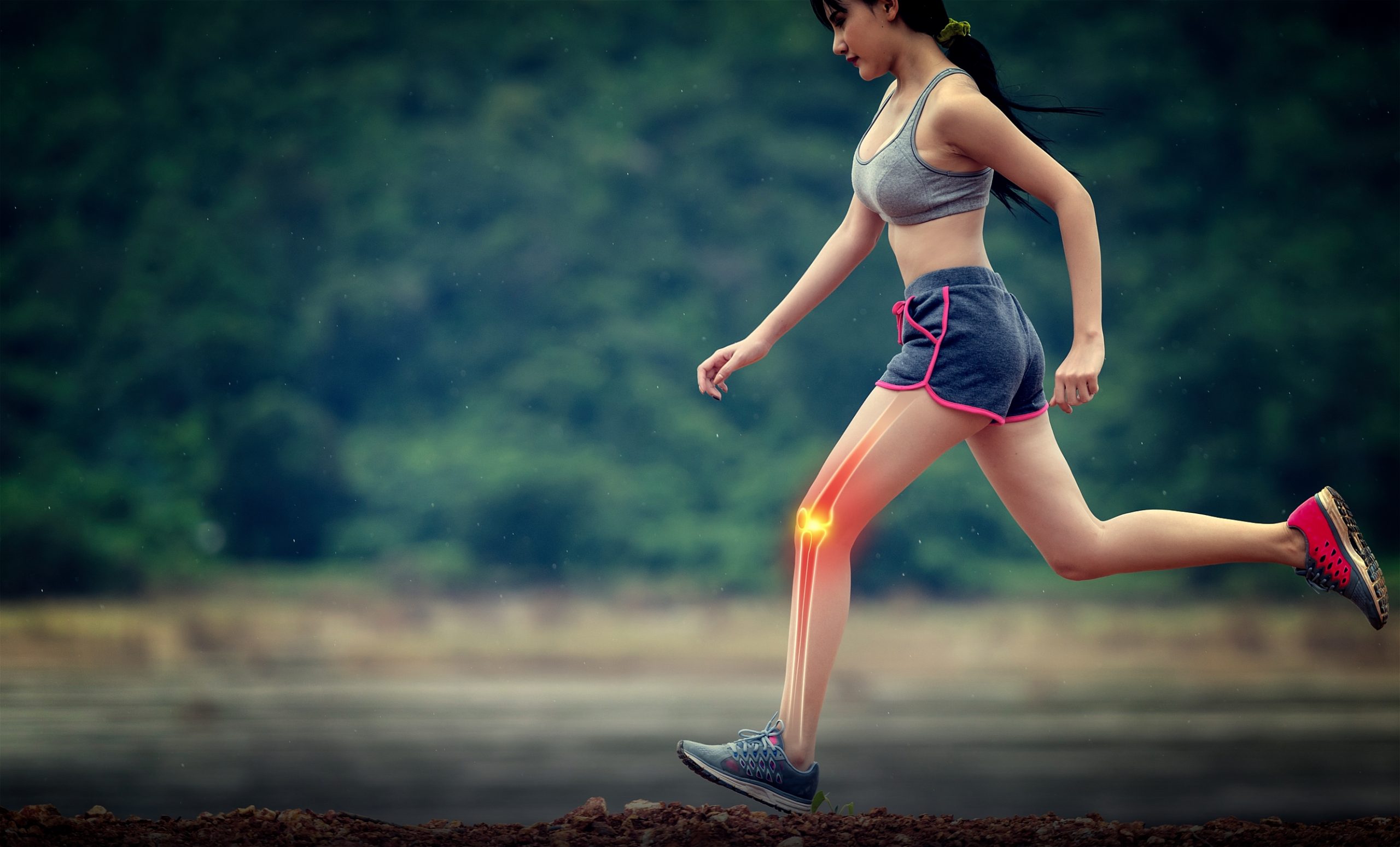Patellofemoral Pain Syndrome (Runner’s Knee)
Patellofemoral Pain Syndrome (runner’s knee) is an umbrella term to describe pain in the front of the knee, in and around the kneecap. It can be considered to be a soft tissue disorder.
It is often an overuse injury, especially found in some sportspeople such as runners and is common condition in young people and women. The “patella” means kneecap and “femur” means thighbone and patellofemoral pain may originate between the kneecap and thighbone and can have many underlying causes.
Rachel Miller is a highly experienced podiatrist who treats many patients with patellofemoral pain syndrome. Please see below if you want more detailed explanation of patellofemoral pain syndrome, its symptoms, causes and treatment.
Call 020 8348 5553 to make an appointment
Patellofemoral Pain Syndrome
Symptoms of patellofemoral pain syndrome (runner’s knee)
Pain can start gradually and occur in one or both knees.
Symptoms can include:
- Dull, aching or sharp and shooting pain in the front of the knee and in and around the kneecap.
- Pain worse activity, exercise or going up and down stairs.
- Pain can also be worse sitting with knees bent for a long time.
- Crackling or crunching sounds in your knees when you bend or straighten them.
Causes of patellofemoral pain syndrome (runner’s knee)
The exact causes of patellofemoral syndrome are not known, rather they are probably a combination of underlying factors. When the knee is bent or straightened the patella glides up and down in a groove in the femur. If the patella has moved to one side of the groove it can rub against the femur which can cause pain and pressure at the patellofemoral joint.
It is often an overuse injury, repetitive actions stressing the knee not allowing time for healing to occur and this might be exacerbated by a change in an exercise regime, its intensity or duration. Patellofemoral pain syndrome is more common in adolescence as the long bones are growing faster than the muscles, tendons and ligaments which puts stresses on the joints.
Some causes for patellofemoral pain syndrome could include:
- Biomechanical issues – Flat feet can cause excessive internal rotation at the knee or hip, placing more strain across the knee joint. Other structural reasons such as a kneecap which sits high or wide (laterally) in its groove; a trochlea groove which is relatively shallow; or variations of the shape of the hip and thigh bone which can cause the knee to turn inwards when walking.
- Muscle imbalance – Tight hamstring or quadriceps can cause the kneecap to be pulled toward the outside of the knee.
- Weak or unbalanced quadriceps muscles – Can cause the kneecap to move up and out, toward the outside of your knee.
- Tightness of the iliotibial band – The strong band of thick tissue running down the outside of the thigh can pull the kneecap outwards.
- Hypermobility – Can cause increased motion across the knee joint.
- Weakness in the hip/buttock (gluteal) muscles – This can contribute to poor alignment of the leg and knee, or excessive tightness of other thigh muscles both of which can place extra stress on the patellofemoral joint.
- Osteoarthritis – In the patellofemoral joint which may cause anterior knee pain.
Risk factures include:
- injury can affect muscles or the knee joint
- sex; woman are twice as likely to develop the condition
- increased body weight can be a factor
- age; affects adolescents and older people
- poor training practices
- change in training surface could be a factor
- change in training regime, its intensity or duration could be a factor
- incorrect footwear may exacerbate
Treatment of patellofemoral pain syndrome (runner’s knee)
Treatment of patellofemoral pain syndrome will depend on the underlying causes that may have produced the condition.
Initial treatment for patellofemoral pain syndrome can include P.R.I.C.E – Protect; Rest; Ice; Compression; Elevation
Other treatments for patellofemoral pain syndrome include:
- medication
- taping
- tailored strengthening and stretching exercises
- orthotic insoles
A biomechanical assessment from an experienced podiatrist can help to correctly identify patellofemoral pain syndrome, any underlying causes and rule out other patella-femoral issues to be able to give you an appropriate treatment plan. Non invasive conservative treatment may help control symptoms of patellofemoral pain syndrome.
Contact the Centre for an appointment on 020 8348 5553
Rachel Miller is a highly experienced podiatrist specialising in biomechanics who sees many patients with patellofemoral pain syndrome. Her clinic, Highgate Podiatry, is in Highgate Village, 14 Pond Square, N6 6BA, London. Clinics are held every Sunday, Wednesday and Thursday. Please contact the clinic for an appointment on 020 8348 5553. For the clinic’s address, map and directions see the Contact page and for information about orthotic insoles and biomechanics see the Biomechanics page.
Links to Services:
Links to Conditions Treated Include:
- Achilles tendinopathy
- Ankle fractures
- Ankle injuries
- Arthritis
- Back pain
- Bunions
- Corns/Calluses
- Diabetic care
- Flat feet
- Fungal toenail/athlete’s foot
- Haglund’s deformity
- Hammer toe and mallet toe
- Heel pain
- High arches
- Hypermobility
- Ingrown toenail
- In-toeing, toe walking, curly toes
- Knee injuries
- Metatarsalgia
- Morton’s neuroma
- Osgood-Schlatter disease
- Overuse injuries
- Patella tendinopathy
- Patellofemoral pain syndrome
- Plantar fasciitis
- Sever’s disease
- Sprained ankles
- Stress fractures
- Tarsal tunnel syndrome
- Toenails






